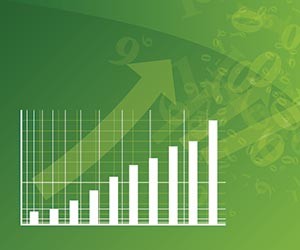After years in the making—good things take time, after all—the APEX/ASTM Environmentally Sustainable Meeting Standards were released earlier this year, sharing 2012 with two other major sustainable event standards releases: ISO 20121 and GRI EOSS.
But now that you know what you’re supposed to measure to ensure more-sustainable meetings, how do you go about doing it?
Whether you’re a green meetings expert equipped with a slide rule and advanced powers of mathematical cognition, or just an average, everyday planner with a heart of gold and/or an organizational mandate to “go green,” the age of measurement is upon us.
Following are some key tips from sustainable meetings experts.
“The first thing to do is really reflect and document what you do today because you’re not going to mark any progress unless you have a pretty clear understanding of where you are,” says Sue Tinnish, a Kendall College assistant professor and principal of SEAL Inc. who is an authority on sustainable meetings. “I think the reality is it’s difficult—if not impossible —to go from 0 to 120 mph in terms of sustainability. Being able to mark your progress will help you build future business cases to know your progress as well as any costs or benefits.”
A great beginning step is for planners to consult with their suppliers, Tinnish says, so they can learn what the suppliers are up to as far as sustainability measures.
“They can help you get that low-hanging fruit,” she says, citing as an example waste-haulers keeping track of how much materials they dump, recycle or compost.
PageBreakHotel chains are another great place to start.
“Realistically, most hotel chains are doing something already,” she says. “I’m hard-pressed to think of a hotel chain that doesn’t have some sort of sustainability effort. You may have to push harder in areas such as food and beverage, but most major companies are doing something.”
Tinnish recommends checking with the Green Meeting Industry Council’s (GMIC) Green Supplier Directory (http://gmic.officialbuyersguide.net) to find out what suppliers are members.
Planners should also exercise patience with hotel salespeople, Tinnish says, as it’s not reasonable to expect them to know every detail of their property’s sustainability effort. By giving them time to respond with more-complete information, the chance that the information will actually be accurate increases dramatically, too.
Another great tip is to access the Hotel Carbon Measurement Initiative (www.wttc.org/activities/environment/hotel-carbon-measurement-initiative), a joint effort by the World Travel & Tourism Council and the International Tourism Partnership that has brought together 23 hotel companies to agree on a common methodology for measuring carbon emissions.
Katherine Manfredi and Danielle Adams, who taught a “7 Steps to Integration of the APEX/ASTM Environmentally Sustainable Event Standards” workshop at GMIC’s June CMP Conclave, agree that measurement is a key step on the sustainability path.
“Measurement and reporting are so important,” Manfredi says. “It is part of the sustainability journey, and there are some tools and standards out there to help us, as event professionals, along the way.
“Reporting is essential so that you have a record of your accomplishments, allowing you to share your achievements with your stakeholders and for you to celebrate your successes,” she continues. “It can identify year-over-year accomplishments, and measurement is necessary to understand your progress, of course, so that you have something concrete to report.”
PageBreakAdams echoes Manfredi’s remarks, and says the two of them frequently “repurpose” the old business maxim, “What gets measured gets managed,” to apply to sustainable meetings. “
Most planners do want to be ahead of the curve, and with the right tools and a partnership with suppliers, they can incorporate measurement into their work,” Adams says. “It is best to establish a baseline and work from there. Today, there are planners and suppliers at both ends of the spectrum. Some are just beginning to take very small steps, and others who have been doing this for years have an enormous amount of data collected already.
“I don’t think measurement, and thinking of it as ‘mathematical,’ is nearly as daunting as it was even two years ago,” Adams continues. “The Sustainable Events Measurement Tool produced by MPI and GMIC with the new MPI S.E.M.T. 2.0 version is an excellent tool to help store your data.”
And even though the idea of measuring and reporting sustainability efforts may seem daunting to the less-mathematically inclined, it is the way of the future for a growing list of major corporations.
“More and more companies—biggies such as Walmart—are reporting their sustainability and CSR such as through the GRI [Global Reporting Initiative],” Manfredi says, “and with CSR on the minds of more and more leaders, it’s essential that event professionals realize that ‘green meetings’ are not a passing trend or ‘done,’ but will become more and more a way of doing business and how we plan, manage and execute meetings and events.
“I believe any destination and venue that is not already involved in becoming more sustainable will be left behind as planners discover that their event is more sustainable if they select the right location and suppliers that align with their sustainability goals and objectives,” Manfredi adds.







